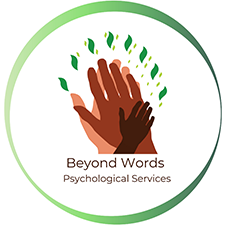Seven Hidden Harms in Performative Racial Allyship
If you are white, it may be easy to view performative racial allyship as benign. It’s short-lived and superficial nature does not look much different from other trends – a hashtag, a retweet, a meme, a “like,” a conversation starter, a t-shirt order, or a yard sign. You might assume that, even if it is not actually helping anyone, it is “better than nothing.”
As a person of color and psychologist who frequently works with people of color, I disagree.
Here are seven hidden harms caused by the performative racial allyship of white people:
1) It assumes fleeting care is enough to create lasting change. White privilege may allow you to (incorrectly) assume that change will be easy, but when it comes to race hundreds of years of evidence prove that change is a slow, non-linear, and exhausting battle that is unlikely to ever reach a fully-resolved destination. If change is expected to be swift and simple, commitment to the long-haul effort fades quickly, and fewer white people pushing for racial equality means that substantial change is unlikely to occur.
2) People who have limited knowledge about a topic are more likely to spread inaccurate information. When you hop on the bandwagon of a particular social justice issue because it’s trending in the news cycle, your knowledge of that topic is understandably limited. You may not know which sources are credible, which terminology is appropriate, or which articles are backed up by solid research. This leads to inaccurate information being shared, thus reducing the legitimacy of the cause.
3) It prioritizes convenience. Social justice work is inevitably inconvenient – uncomfortable conversations, ongoing education, humility within the learning process, and the constant adjustment of plans to engage compassionately and effectively with current events as they arise. Performative allyship, at its core, is not about any of these things. If your white privilege allows you to dip in and out of anti-racism work as it fits your schedule, mood, and interests, you are prioritizing convenience over the lives, wellbeing, and equity of people of color.
4) Credit is expected. Performative allyship is about reputation. Wanting to appear compassionate and informed is self-serving, whereas being compassionate and informed is an act of selflessness. If your goal is to look like you are fighting for the rights of people in communities of color so that others will view you as an anti-racist ally, your energy is being expended on yourself, instead of the people who actually need your help.
5) It betrays trust. When you claim to be an anti-racist ally, you give people of color hope. We wait and watch, wondering whether you will follow through on fighting this battle with us. When you don’t, we become hurt, disappointed, frustrated, and disenchanted with not just you, but all white people. So, not only are you harming people of color, but you’re giving all white people a bad rap.
6) It overtaxes people of color. The voices of people of color are never more in-demand than after their particular racial community has been harmed. The inundation of requests to learn from their lived experiences, develop anti-racist policies and curricula, and promote their voices comes at time when they are likely to be at their most vulnerable, wounded, and depleted due to the devastation of the event that preceded the requests. To expect their emotional labor in the aftermath of racial trauma, often for free because an organization has not budgeted or planned for a reactionary racial event, is the epitome of exploitation. The value of learning from us is ever-present, not just when it has the potential to make you look good.
7) It hinders true activism. Choosing to engage in anti-racist work sporadically creates unforeseen obstacles for those who are laboring in the trenches every day. Performative allyship trends can divert attention away from the message meant to be shared, clutter hashtags with unnecessary information, and overshadow the people of color who truly deserve to be heard and credited. It takes up space in areas that are already limited in capacity.
The next time you consider joining a trending anti-racism movement, ask yourself if you’re perpetuating the cycle of harm to people of color, or if you’re genuinely committed to the cause.
